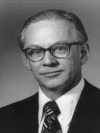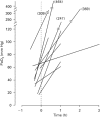Surfactants: past, present and future
- PMID: 18446178
- PMCID: PMC7104445
- DOI: 10.1038/jp.2008.50
Surfactants: past, present and future
Abstract
In 1929 Kurt von Neergaard performed experiments suggesting the presence of pulmonary surfactant and its relevance to the newborn's first breath. Almost 25 years later, Richard Pattle, John Clements and Chris Macklin, each working on the effects of nerve gases on the lungs, contributed to the understanding of the physiology of pulmonary surfactant. About 5 years later Mary Ellen Avery and Jere Mead published convincing evidence that preterm neonates dying of hyaline membrane disease (respiratory distress syndrome, RDS) had a deficiency of pulmonary surfactant. The first trials of nebulized synthetic (protein-free) surfactant to prevent RDS were published soon after Patrick Bouvier Kennedy (son of President John F Kennedy) died of this disorder after treatment in Boston. These trials were unsuccessful; however, Goran Enhorning and Bengt Robertson in the early 1970s demonstrated that natural surfactants (containing proteins) were effective in an immature rabbit model of RDS. Soon after this Forrest Adams showed that a natural surfactant was also effective in an immature lamb model. Working with him was Tetsuro Fujiwara who 2 years later, after returning to Japan, published the seminal article reporting the responses of 10 preterm infants with RDS to a bolus of modified bovine surfactant. During the 1980s there were numerous randomized controlled trials of many different natural and synthetic surfactants, demonstrating reductions in pulmonary air leaks and neonatal mortality. Subsequently natural surfactants were shown to be superior to the protein-free synthetic products. Recently there have been a number of randomized trials comparing different natural surfactant preparations. Commercially available bovine surfactants may have similar efficacy but there is some evidence that a porcine surfactant used to treat RDS with an initial dose of 200 mg per kg is more effective than a bovine surfactant used in an initial dose of 100 mg per kg. Bovine and porcine surfactants have not been compared in trials of prophylaxis. Very recently a new synthetic surfactant with a surfactant protein mimic has been compared with other commercially available natural and synthetic surfactants in two trials. The new surfactant may be superior to one of the older protein-free synthetic surfactants but there is no evidence of its superiority over established natural products and it is currently not approved for clinical use. A number of other new synthetic surfactants have been tested in animal models or in treatment of adults with ARDS, but so far there have been no reports of treatment of neonatal RDS. Natural surfactants work best if given by a rapid bolus into the lungs but less invasive methods such as a laryngeal mask, pharyngeal deposition or rapid extubation to CPAP have showed promise. Unfortunately, delivery of surfactant by nebulization has so far been ineffective. Surfactant treatment has been tried in a number of other neonatal respiratory disorders but only infants with meconium aspiration seem to benefit although larger and more frequent doses are probably needed to demonstrate improved lung function. A surfactant protocol based upon early treatment and CPAP is suggested for very preterm infants. Earlier treatment may improve survival rates for these infants; however, there is a risk of increasing the prevalence of milder forms of chronic lung disease. Nevertheless, surfactant therapy has been a major contribution to care of the preterm newborn during the past 25 years.
Figures








Comment in
-
Corrections regarding lucinactant and clinical trials involving lucinactant.J Perinatol. 2009 Jan;29(1):72; author reply 73-4. doi: 10.1038/jp.2008.127. J Perinatol. 2009. PMID: 19112463 No abstract available.
-
Early administration of surfactant in spontaneous breathing with nCPAP through a thin endotracheal catheter--an option in the treatment of RDS in ELBW infants?J Perinatol. 2009 Mar;29(3):256. doi: 10.1038/jp.2008.245. J Perinatol. 2009. PMID: 19240733 No abstract available.
References
-
- Von Neergaard K. Neue auffassungen uber einen grundbegriff der atemmechanik. Die retraktionskraft der lunge, abhangig von der oberflachenspannung in den alveolen. Z Gesamt Exp Med. 1929;66:373–394. doi: 10.1007/BF02621963. - DOI
-
- Clements JA. Dependence of pressure-volume characteristics of lungs on intrinsic surface active material. Am J Physiol. 1956;187:592.
Publication types
MeSH terms
Substances
Grants and funding
LinkOut - more resources
Full Text Sources
Other Literature Sources
Miscellaneous

